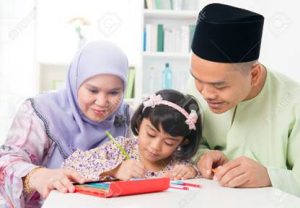Background on Southeast Asian Parenting

Background on Southeast Asian Parenting
In order to understand the parenting styles of South Asian parents, we need first to understand the learned and shared experiences within social groups that shape the parents’ personal connection on their family.
Normally, Southeast Asians consist of many family members that come from three or four generations living together. Usually, nuclear families consist of four to eight children, depending on the economic stability and social status and cultural group.
The culture of Southeast Asian centers on the person’s religious, economic, political and social part in the family. It also gives an understanding that the responsibilities of every member of the family are for the benefit of each other. As a concrete, example, older parents and siblings must nurture the children as they grow so that when the time comes that they are mature enough to handle responsibilities, they will take the responsibility to take care of their aging parents or siblings. Family relationships and responsibilities are clearly explained. Helping each other is a two-way process that makes their relationship stronger and creating successful tasks will help each other grow.
When it comes to raising their children, Southeast Asian parents give importance to education and knowledge because knowledge is essential for wisdom and goodness. Older parents and scholars are greatly honored because of their learned experiences and deep understanding. Parents from Southeast Asian countries want their children to receive good quality education, even though this has traditionally been very true for their children. Every time a child finish his or her degree program pursue his or her wildest dreams, he or she is honored by the whole members of the family an gives the person. The wisdom from elder members of the family is connected from the ancestral practices and importance of tradition.

